By: Mike Holmes – Assistant Watch Leader – CV23 – Team WTC Logistics
At the start of January, I headed off on an adventure, sailing as crew and assistant watch leader in the 2019-2020 Clipper Round the World Yacht Race, an ocean yacht race for amateur sailors. I participated in Leg 5, with the original scheduled route from Australia to China. With the COVID-19 outbreak our plans would change, but more on that later.
During the race, myself and 17 other crew spent 37 days at sea, sailed 6,000 nautical miles between 2 separate races, crossed the equator, spent hours becalmed in the doldrums, and experienced the high of a race win and low of a race loss. What an experience it has been!
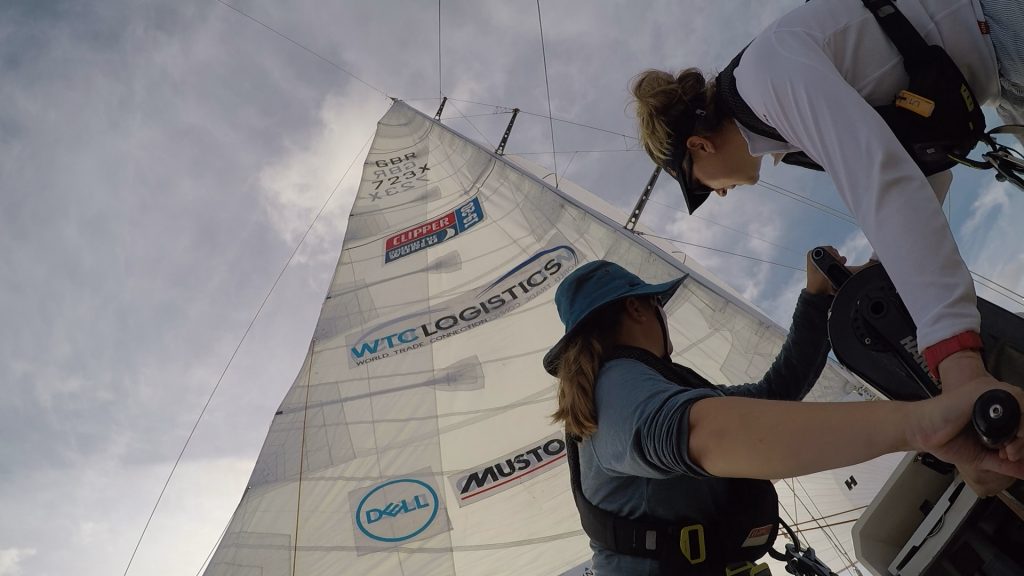
The eleven 70’ one-design yachts left London in September 2019 for the 40,000+ nautical mile journey around the world, broken into 8 separate legs, and taking 11 months to complete. The yachts had left Fremantle, Western Australia in December and were due to arrive into Airlie Beach, Queensland, Australia around the 11th of January.
I had arrived at the Coral Sea Marina in Airlie Beach on the 8th of January. I was able to spend time exploring the area including a few snorkeling trips to the Great Barrier Reef and a trip to Whitehaven Beach. Such a beautiful part of the world, outside of all the aquatic creatures that can kill you! Think sharks, salt water crocodiles, Irukandji and Box jellyfish!
The race was originally scheduled to depart on January 18th but we were delayed by 48 hours due to two of the boats not having operational water makers. Heading out into the tropics on a water ration of two liters, per person, per day was doable, but not recommended.
We departed the Coral Sea Marina on January 20th, but it would be another two days before the actual start of the race. We were to motor through the Great Barrier Reef and start the race just offshore, but the lack of wind postponed the race start. Because of this, we continued motoring north of east, towards the Solomon Sea.
This delay of 24 hours allowed the fleet to stop for an afternoon swim in 1,400 feet of water in the middle of the Coral Sea. What an amazing experience to jump off the yacht and try to “cool off” in 86-degree Fahrenheit sea water.
The next day, January 22nd, the wind had filled in and we were able to start the race. This would be a LeMan’s start, where all eleven boats lined up abreast of one another, with a full mainsail up, head sails rigged to hoist, and motoring at about 7kts speed over ground. Crew are required to stand behind the aft coffee grinder prior to the start. With one minute to go the engine is shutoff. The countdown is conducted by a designated lead skipper over VHF radio. At ZERO, the crew rush to their predesignated positions. The boat that can hoist and trim their head sails the quickest will lead the fleet off the line.
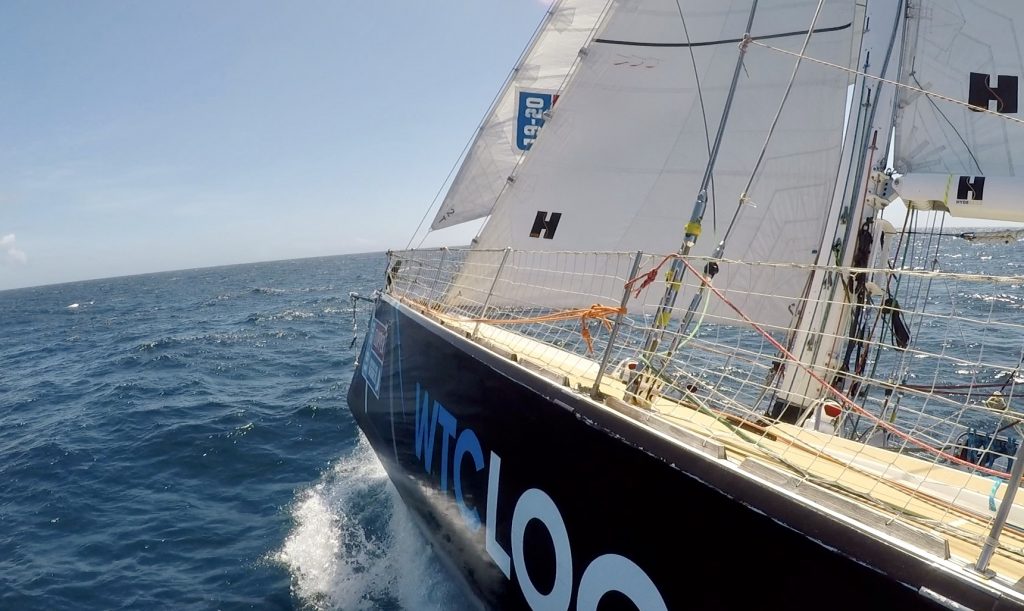
We were located the second boat to windward with all boats on starboard tack. I was one of the sweaters, so my role was at the mast, hoisting the large yankee head sail by pulling down on the attached halyard. The yankee 1 is only 1,255 square feet of sail that has to be hoisted to the top of the mast, some 95’ above the waterline! Race start went smooth and within the first hour we were in the top half of the fleet, which isn’t saying much in a 4,000+ nautical mile race! We had a long way to go.
It would be light wind sailing for the next few weeks. After about a week at sea we received notice from the race office of the corona-virus (COVID-19) that was being reported as an outbreak in China. We didn’t know the extent of it but we were told it would most likely affect our race. About two more weeks went by before the official word came out that our race finish was being changed from Sanya, China to Subic Bay, Philippines. We were disappointed by this news but understood the reasoning and it ultimately played into our favor.
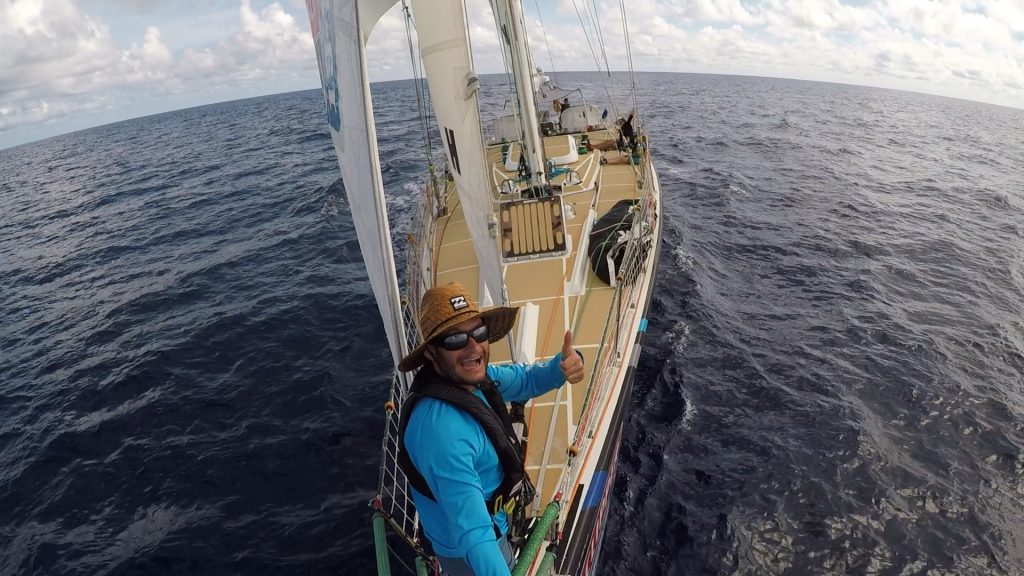
As we left the Coral Sea and entered the Solomon Sea, the doldrums motoring corridor lay just ahead. Doldrums are the nickname for the Inter Tropical Convergence Zone (ITCZ), an area known for light winds as weather patterns from the northern and southern hemisphere converge.
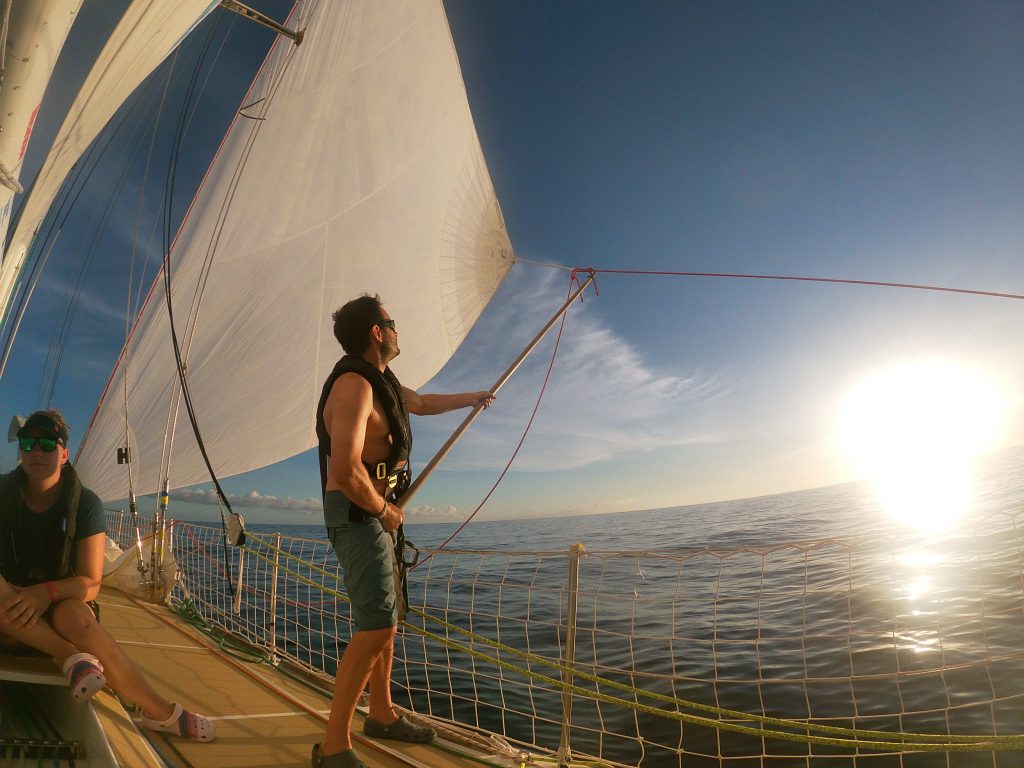
This section of the race course is aptly named due to the fact that teams can opt to turn on their engines. Wait? What? I thought this was a sailboat race? Let me explain, in order to maintain an arrival window to the next port and keep the overall program on schedule, teams can motor through the doldrums.
For this race, teams could motor between 8 degrees south and 4 degrees south, a distance of 240 nautical miles and roughly where the doldrums were located at this time of year. The caveat is you have to motor for 36 consecutive hours. If you arrive at 4 degrees south before the 36 hours is up you must wait there until time expires before proceeding north. If you started motoring too early you may be short of the 4-degree marker. The motoring corridor would present itself as the first chance for a tactical maneuver.
Our skipper reviewed the weather forecast (GRIB files) and made the call to delay our motoring corridor start to maximize the amount of northerly latitude we could gain within the hours allocated for motoring. We were towards the very back of the fleet entering the motoring corridor as all the other boats had started their motoring prior while we were stuck in a wind hole.
Luckily the weather forecast was correct and soon enough the wind built and we started to catch up with the rest of the fleet. As the competitors ended their motoring corridor time allocation, they were still short of 4 degrees north and they ended up in a wind hole. We continued to motor past them and went from last place to 2nd place. It was a brilliant tactical play and set the stage for the remainder of the race.
We continued north and after 12 days at sea we crossed the equator on January 31st at 0 degrees 0.00′ north, 151 degrees 5.249′ east. It was in the middle of the night as we crossed but all the crew were awake and on deck to mark this special occasion. King Neptune would hold his court later that day.
A seafarer tradition, all crew that cross the equator for the first time have to attend King Neptune’s court. This is the ceremony where the crew go from being a pollywog to a shellback. This includes confessing a boat sin and having to eat a special mixture from Davy Jones’ galley. Let’s just say, I’m glad I have already crossed the equator before, in 2008 aboard the T/S Golden Bear with the California Maritime Academy.
As we continued heading north of west towards the Luzon Strait, some 2,000 nautical miles away, we went from wind hole to wind hole. This required constant sail changes with the most used sail being the windseeker. This large, light wind sail has an area of 1,750 square feet and is a cross between a yankee head sail and a small spinnaker. It is most like a gennaker sail. Once the wind would approach 10kts apparent wind speed this sail would be dropped and a yankee head sail hoisted. In addition, we were also constantly hoisting and lowering the stay sail which only provided benefit above 7kts of apparent wind.
Finally, a low-pressure system developed that we could utilize to slingshot ourselves towards the northern tip of the race course. In a matter of 24 hours we saw the wind build to 25kts+ with a sea state between 3 meters and 4 meters. With the wind just abaft the beam it was great spinnaker weather!

Our spinnaker of choice was the Code 2, which has a sail area of 3,465 square feet and is rated for up 20kts of apparent wind speed. It was so much fun on the helm of a 70′ ocean racing yacht with a spinnaker up in a moderate to rough sea state. I was in a constant state of bliss, surfing a 49-tonne yacht down waves at speeds up to 20kts SOG.
Our position on the race course, sitting about 6th at the time, was favorable to this low-pressure system and we saw massive gains on the lead yachts. Every 6 hours we received an update from the race office on our position relative to the fleet. It was encouraging as we continued to decrease the distance to the boats in front of us. Our skipper reminded us, focus on the boat in front, once we pass them then focus on the next boat, don’t worry about the front runners. At this point we thought we may be able to get on the podium in 3rd place.
As we exited the Luzon Strait and entered the South China Sea, the next tactical decision was to head inshore or offshore as we raced south towards Subic Bay, Philippines. The two lead boats headed offshore, but the weather forecast showed an inshore route that could potentially be favorable. Our skipper opted for this inshore route. It would be a few days of chutes and ladders before we knew if we had made the right tactical choice.

48 Hours later and we were chasing down 1st place. At the same time, the two boats that were leading a few days prior but offshore were now in 3rd and 4th place. They altered course and dove deep inshore, which saw them sneak up on our inside. With only 100 nautical miles to the finish it was still anyone’s race. At this point we saw the first-place boat head slightly more offshore in search of a little more wind. Our skipper took the helm and was able to keep the inshore boats at bay. All of a sudden, we found ourselves sitting in first place.
The next 12 hours were intense. Not only from a sailing perspective, but from a mental perspective. We knew we were capable, but with the variable wind and the top boats breathing down our transom, we knew we couldn’t ease off or celebrate until we crossed the finish line.
I remember going to bed that night, hearing the whooshing sound of water along the hull adjacent to my bunk. That was a positive sound, a sound that we were moving through the water at a good speed towards the finish line. Then the sound stopped.
Another bloody wind hole! I came on deck for my watch at 0200 with only 25 nautical miles to go in the race. I started praying to the wind gods, and literally the wind started to pick up. It was a very surreal moment. The wind started to build and back, which gave us a lift towards the finish line. With no other Clipper boats in sight the thought of a 1st place was getting more and more real. A few tacks and a few hours later we crossed the finish line in 1st place! It was a feeling and a moment I will never forget.
Once across the finish line it was time to drop the sails, put up the sponsor flags and prep to enter the marina. 50 Minutes later and we were dockside, celebrating 26 days at sea, 4,300 nautical miles, and a win of Race 6 in Leg 5 of the 2019-2020 Clipper Round the World Yacht Race. It doesn’t get much better than this!
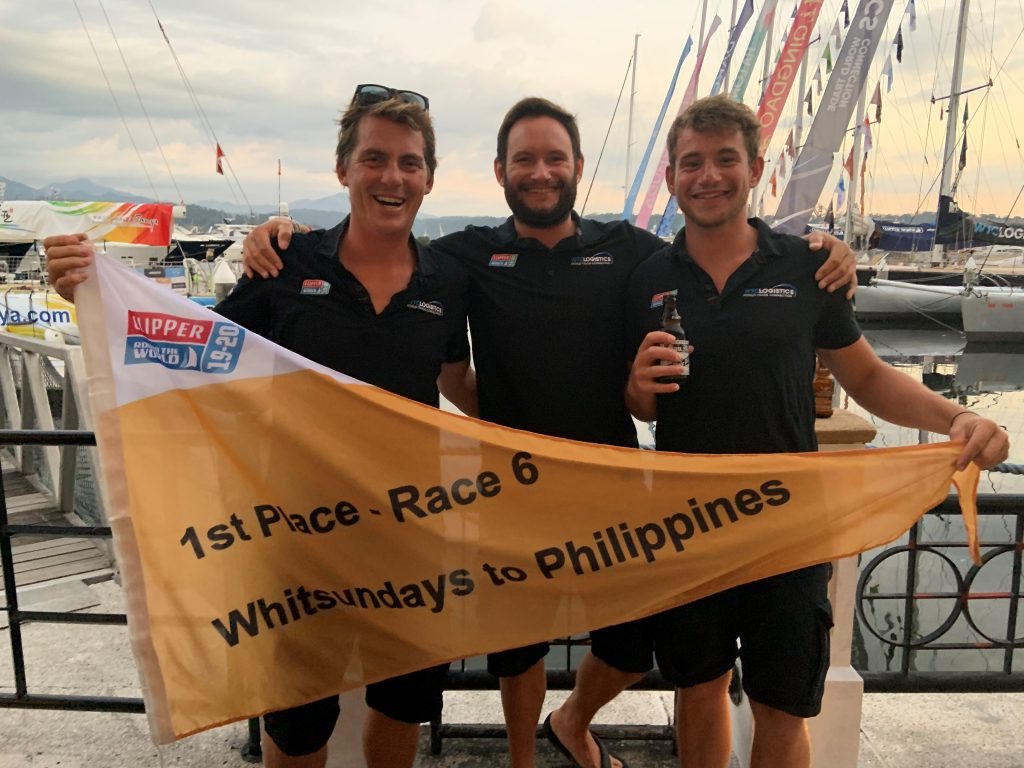
We spent the morning celebrating, drinking champagne, beer and then gorging ourselves at the all you can eat buffet located at the Subic Bay Yacht Club. That afternoon I checked into my hotel and had the first proper shower in 26 days. One word, luxury.
Our stopover consisted of doing a deep clean of the yacht, followed by a few maintenance days. We ended with the prize giving ceremony, another moment I will never forget.
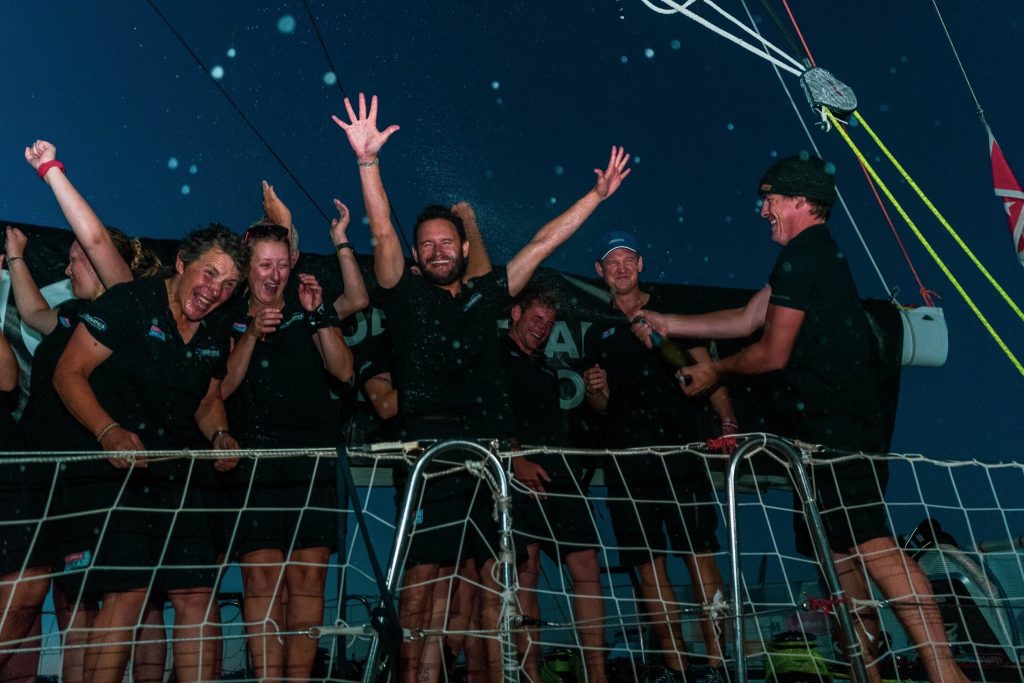
Due to the corona-virus, Clipper made the choice to not continue on to Zhuhai, China where Leg 5 was supposed to finish. Instead we would do a 1,600 nautical mile race up towards Japan and back, ending Leg 5 in Subic Bay, Philippines. I was bummed but knew it was the right choice for the safety of the crew, Clipper employees and supporters.
We had a few days off before the start of the next race. Half of our crew opted to go on vacation together and we flew to Boracay Island in the Philippines. Some well-deserved R&R was in order.
Back to the boat on February 21st, it was time to go racing again, departing on Sunday, February 23rd. We were in high spirits coming off our race win and knew we were capable of potentially getting on the podium again.
This race course would see light wind sailing up along the east coast of Luzon before the wind would build near the Luzon Strait. The race started and it was close quarters racing for the first 24 hours.
As we entered the Luzon Strait, we opted for a more easterly route that showed promise based off the weather models. This was a tactical move we thought would play in our favor. As in life, if you follow the masses you may or may not make marginal gains on your competitors. If you take calculated risk you may make massive gains, or fail miserably. We made a choice and went with it. It would be four days before we knew if our decision would pay off.
Upwind sailing can be exhilarating, with the boat heeled over at 45 degrees, powering through waves, green water over the bow, it’s absolutely amazing being on deck. Below deck it’s another story. Half your time while ocean racing is spent below deck, living. Simple tasks such as cooking, eating, sleeping and using the bathroom become a laborious task when heeled over. Now spend days in a row doing this. It became a true test of mental and physical resilience. It also gave me major respect for those that have done the big ocean crossings and those doing the circumnavigation. It is not easy.
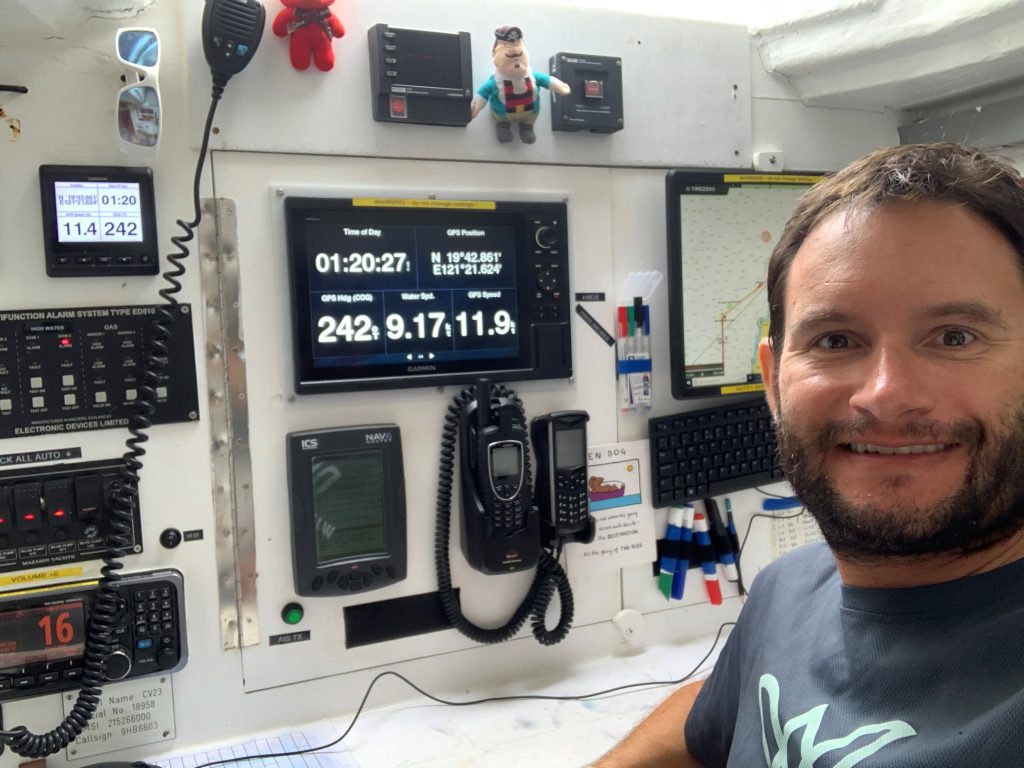
Unfortunately for us, the weather did not play to our favor this time. We rounded the northern mark of the race course in last place. Disheartening, but we knew we were fast and could start focusing on the next boat ahead. We spent the next few days trying to reel in the boats in front. Sometimes we would cross paths, and pull ahead, only to be overtaken again. This went on all the way to race finish. With less than three nautical miles separating us, currently in last place to 10th place, we hit another wind hole.
And that was it, the race was over. The course had been shortened to ensure we all arrived in port in time for the crew change over on March 6th. My Clipper journey had come to an end. Our team was not discouraged by the defeat of finishing in last place. We knew we raced hard and in racing sometimes tactical choices don’t pay off. It was a life lesson and we were content with the outcome. We agreed with our skipper when he said he would rather have a first place and last place than two mid-fleet finishes.
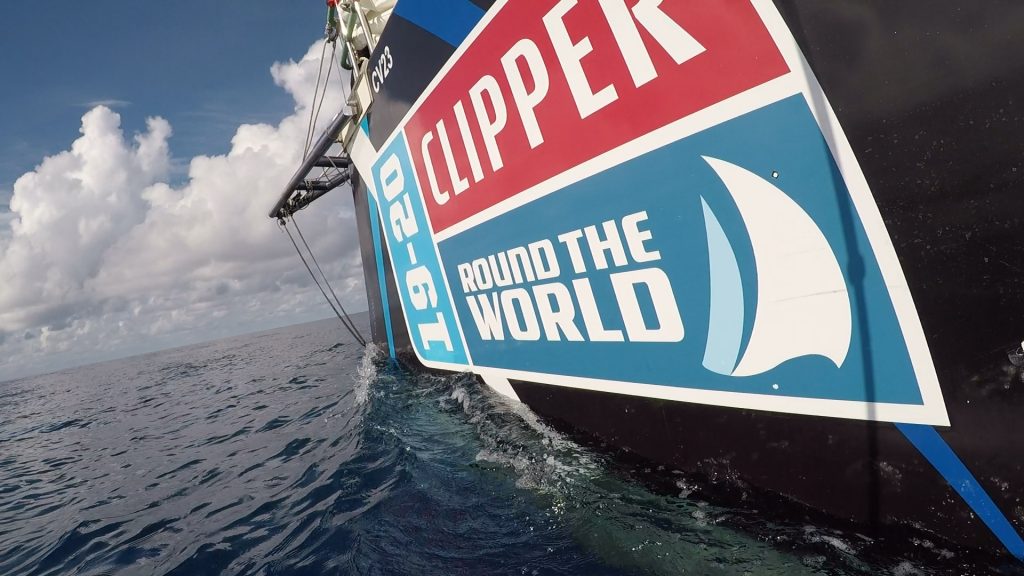
The Clipper Race experience exceeded my expectations. I grew as a sailor, focusing on my helm work, spinnaker work, weather routing and directing a team as Assistant Watch Leader. I also developed friendships with my crew and crew on other boats that I know will last a lifetime. I was fortunate enough to be able to do this experience and it wouldn’t have been possible without the support of my loving wife. We both agree, live life with no regrets.
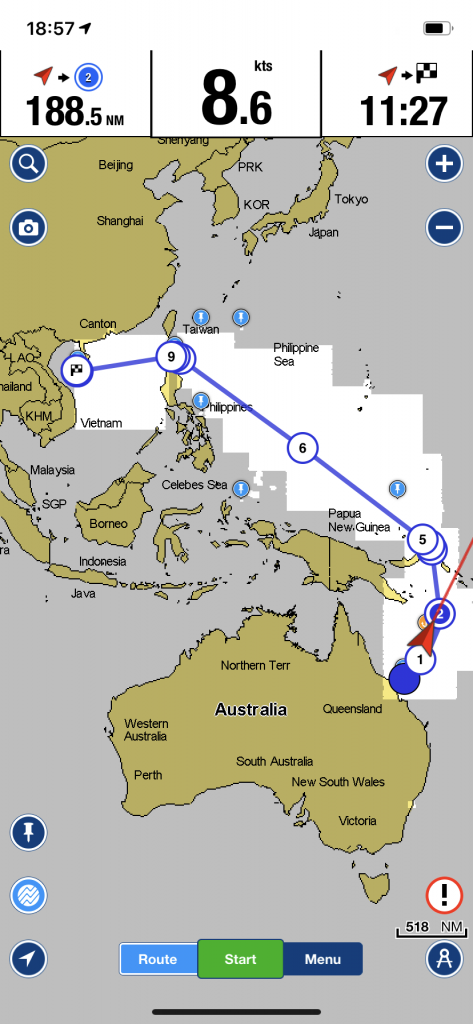
If you want to know more about my trip, check out my blog at:
I am also putting together a video series of my time aboard. You can check it out on my YouTube channel at:
https://www.youtube.com/channel/UCYOeUxa5LQYeGqzPuoOwfiQ/
A major Thank You to the Tradewinds staff and instructors for getting me hooked on sailing! You never know where your sailing journey will take you!
